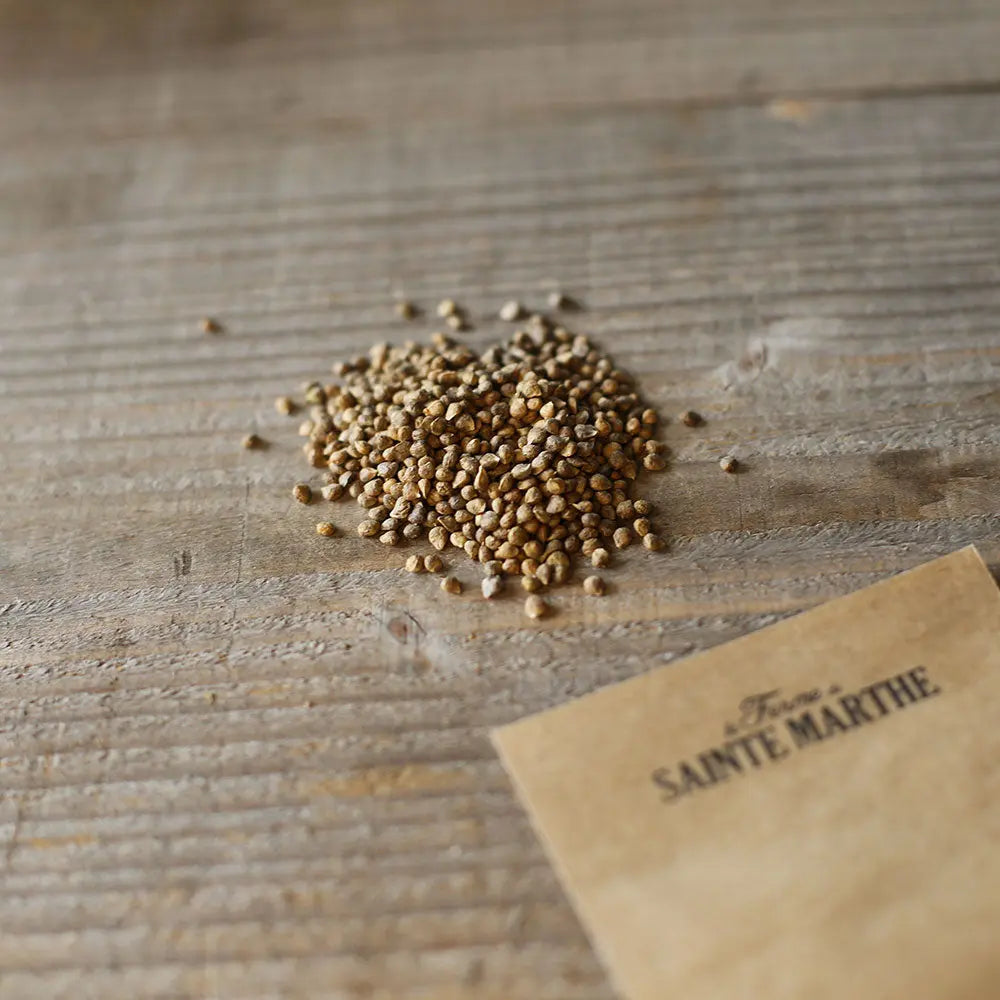EPINARD BUTTERFLAY AB
Spinacia oleracea
An early variety with strong, rapid growth and slow bolting. Produces intense green, fleshy leaves with rounded tips. Very robust and tolerant to mildew, it is suitable for spring, autumn and winter cultivation.
Sowing : March-April or August-October outdoors.
Harvest : from March to May then from September to November.
How to successfully sow spinach
Sowing : light from mid-August to mid-November outdoors, or from late December to early February under cover, in a sunny position, in fresh soil, previously loosened with a broadfork, in rows spaced 25 to 30 cm apart. Sow 2 or 3 cm deep, then firm down with the back of a rake and water. You can cover the seed with a forcing fleece until emergence.
Maintenance : Thin to 10 cm, then weed between the rows and mulch to prevent weed competition. Water frequently if the soil is dry to prevent bolting.
Be careful with heat : it can cause rapid bolting.
Good associations
Spinach likes to grow near peas, broad beans, haricot beans, cabbage, celery, strawberries, lettuce or chicory.
Harvesting winter spinach
Harvest approximately 2 months after sowing. Frequent picking encourages the appearance of new leaves.
Preserving Spinach
Spinach doesn't keep long fresh, but you can freeze it.
The enemies
Snails or slugs : Place slug traps around your crops.
Downy mildew : Do not treat with Bordeaux mixture, as spinach leaves cannot tolerate copper. Use as a preventative measure.
Leaf-eating moths : They cause large punctures or bites during the night. Use a biological treatment based on thurengiensis.









